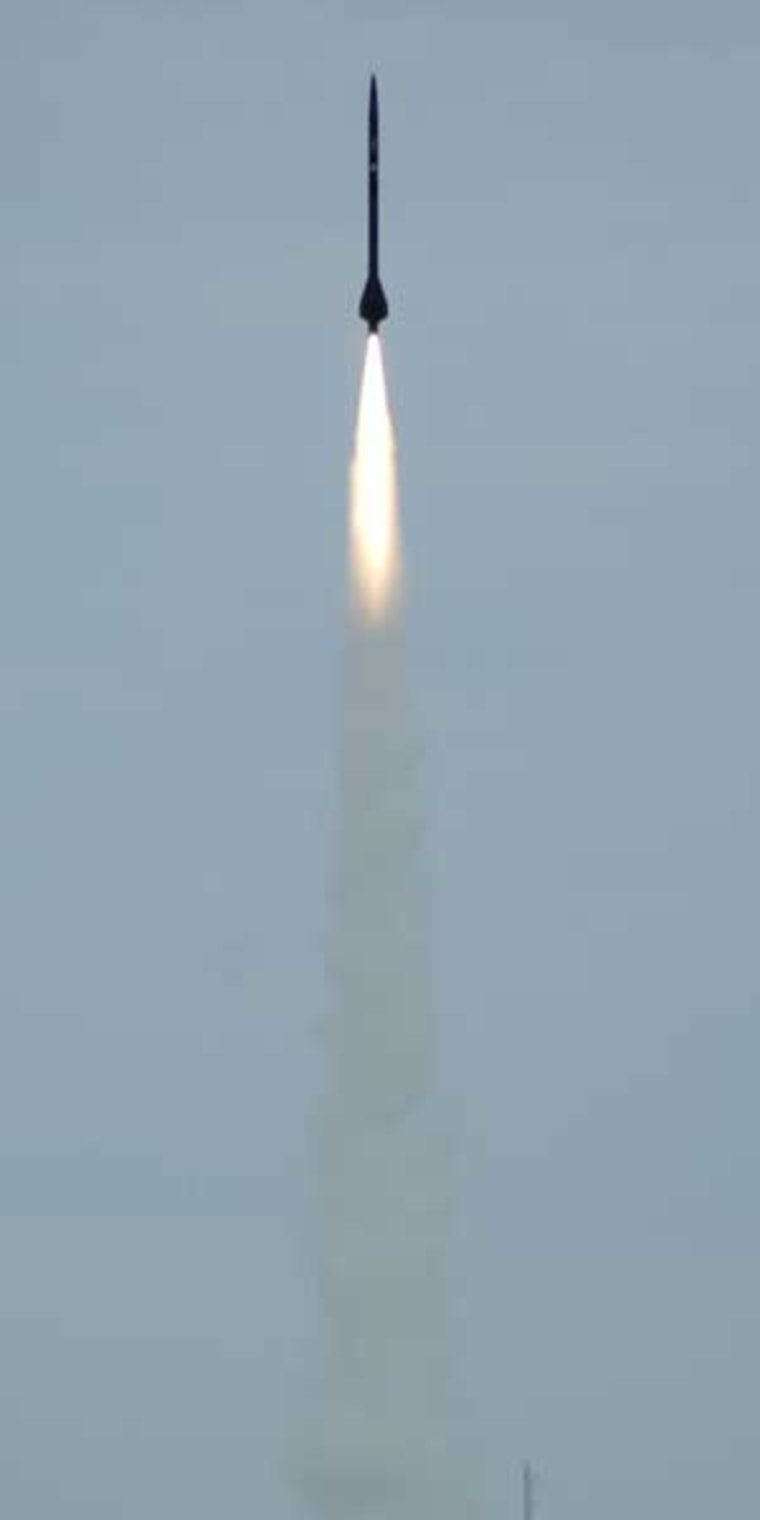Aluminum and water is usually a boring combination, but light a mixture of nanoaluminum and ice and the results are explosive.
Scientists from Purdue University have created a new, environmentally friendly solid rocket fuel that recently sent a rocket screaming 1300 feet into the air using seven inches of nanoaluminum and ice. The new fuel could power missions to the moon or Mars while dramatically reducing the amount of on-board fuel.
"Theoretically you can get very high temperatures using aluminum and water, but the kinetics would be so slow and it would be so hard to ignite that it's very hard to actually make the rocket work," said Steven Son, a professor at Purdue University in Indiana who helped develop the new fuel.
Breaking solid aluminum into very tiny, nanoscopic pieces however, "increases the kinetics to the point where this actually works."
Aluminum already comprises a small percentage of the solid rocket booster used by the space shuttle. The difference between the old aluminum fuel and the new aluminum fuel is the size. Existing aluminum fuel is microns across. The new aluminum fuel is even smaller, averaging 80 nanometers across.
Nanoaluminum can before formed in several ways, all chemical. "There isn't a fine enough blade to just chop it up," said Son. "We use a hot plasma to create an inert aluminum vapor, and then carefully condense that while slowly allowing some to create an oxide."
The final product is a loose and fluffy black powder. Aluminum ice, or ALICE for short, can be compressed into a solid bar for safe and easy shipping. Nanoaluminum smaller than 80 nanometers can be created, but it doesn't allow enough oxidation to occur on the surface of each particle, which means not as much thrust. Eighty nanometers, say scientists, appears to provide the maximum amount of thrust.
During a recent field test, the Purdue team launched a nine-foot tall rocket more than 1300 feet into the air using a hollow rod of ALICE seven inches long and three inches across. In less than a second the rocket had accelerated to approximately 200 miles per hour.
That kind of performance is either at or just below what current solid rocket boosters are capable of, says Son and Nick Glumac, a professor at the University of Illinois, Urbana-Champagne. Even if the performance is slightly below current solid rocket fuel, the side benefits of ALICE are significant.
Since ice exists on both Mars and the Moon, ALICE could be manufactured on site. Creating rocket fuel at either location means spacecraft wouldn't have to carry all the fuel for the return trip to Earth; they could simple create it when they arrived.
ALICE is also environmentally friendly. The existing solid rocket booster on the space shuttle produces about 230 tons of hydrochloric acid for every flight. ALICE fuel produces aluminum oxide, found in ceramics and precious stones like rubies, and hydrogen gas.
"It's really great to have a propellant that has excellent performance with such a simple and abundant formulation," said Glumac. "It's not as good at the top propellants, but for many applications this is good enough, and the low cost of fuel makes sure it can be used for a variety of different applications."
Still, 1300 feet into the atmosphere is a far cry from the 238,857 miles to the moon. Son says the new propellant will require years of testing to ensure its stability at the various temperatures and pressures influence the rocket's performance.
"We need to see how these pressures affect the propellant," said Son. "Otherwise the rocket could become a firework, but so far it has all worked out quite well."
